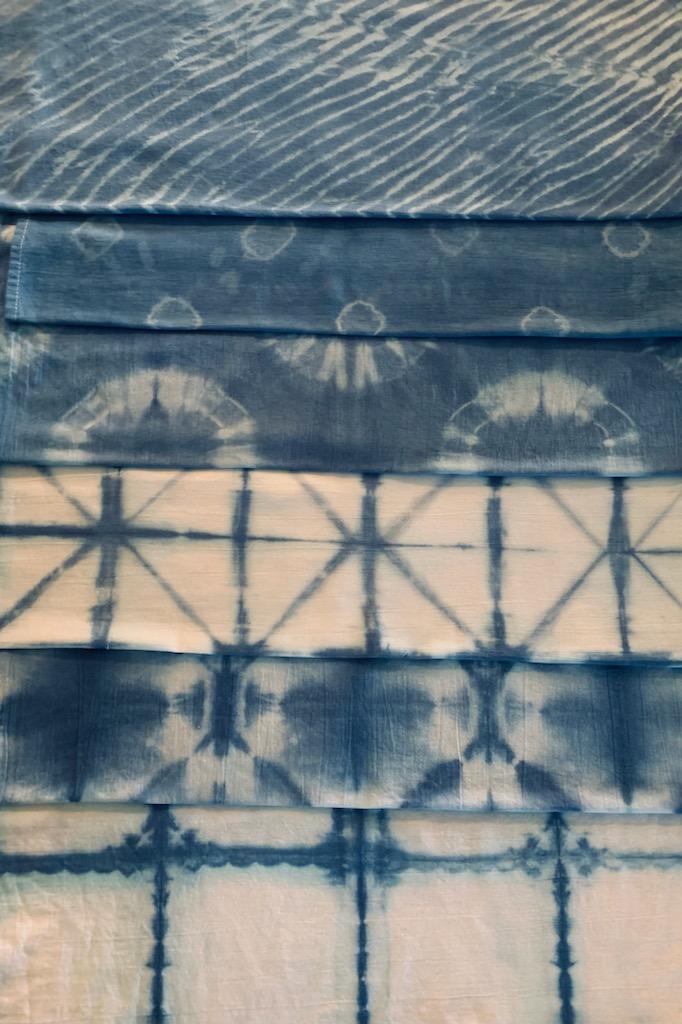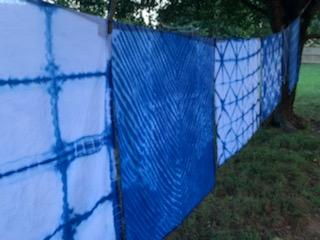
Shibori Dye Technique – Passing on the Tradition to Future Generations
There are so many traditions, practices, and skills that have been lost to time—either technology or modernism has pushed them out, or those who had the skills became fewer and fewer, leading to less teaching. The Shibori Dye Technique is one of those skills.
Thus, we must recognize the skills and techniques of our ancestors and work hard to teach them and pass on the knowledge to future generations, lest the art forms are lost forever.
Shibori dyeing is an ancient, traditional Japanese form of dyeing fabric and clothing. The Japanese characters for the word “shibori” mean to squeeze or wring. The result looks something like modern tie-dye; however, its patterns are much more intricate, and the process goes back hundreds of years.
Shibori Roots
Japanese culture considers shibori to be one of its most ancient art forms. The oldest shibori examples date back to the eighth century during the Shomu Empire. The emperor added a piece of shibori cloth to a donation made to a temple, and the fabric-dyeing technique caught on, developing new forms. In the 1600-1800s, it gained significant traction because lower-class citizens needed an alternative to silk—they were forbidden from wearing it!
Shibori dyeing is usually done with only one color and is incredibly detailed in the process. The artist uses thread to set apart several (sometimes hundreds) of small, repeating sections on a piece of fabric which, when dyed, reveal eye-catching designs.
Most shibori patterns used indigo flowers to create a deep blue hue. Today, shibori dyers also use purple root and madder to create a larger shade range including blues, reds, and purples. It’s almost always used on light-colored cotton fabric because that picks up the dye the most efficiently. Some artists also work with linen and silk.
Modern times show shibori art on haori jackets, which are traditionally worn over kimonos but are now worn over all types of clothing. If you’re a vintage treasure hunter, you’ll probably find some generations-old shibori jackets here and there!
Since natural fabrics and dyes are always used, the pieces have that organic, individual quality that is difficult to find in today’s world of fast fashion. Owning and wearing a shibori piece, especially if it’s one you made yourself, gives you that feeling of pride and appreciation for an artist’s intense handwork and creativity.
Types of Shibori Technique
There are six types of shibori dyeing that most artists pull from when creating a fabric piece.
The most conceptual is kumo shibori. Kumo incorporates any variety of miscellaneous objects to create patterns, such as leaves, flowers, spools of thread, wood pieces, etc. These items are used as the resist, tying the fabric around the object. The result is always different!
To create looping and binding patterns, artists use miura shibori. This is a bit more detailed, with the artist plucking out particular sections of cloth with a needle and hook. This results in repetitive, complex designs that are stunning as a whole.
Kanoko shibori looks quite similar to modern tie-dye because of the technique of tying off sections of fabric. Ancient artists used thread to separate sections, while modern designers now use elastic bands.
One of the most unique shibori techniques is arashi. With this form, the designer wraps, twists, and binds the fabric around copper or wooden poles. This results in mostly diagonal patterns, similar to leaf veins. This process is also called pole-wrapping shibori.
To create some of the most detailed art pieces, dyers use nui shibori. This style incorporates intricate stitching skills, as well. Repetitive and highly accurate patterns are created by using wooden dowels as resists and hand stitching for pattern creation.
The last form is itajime shibori, which results in robust patterns of circles, triangles, and squares. These are made with larger objects for resistance, such as wood, clay, and plastic pieces.
Learning to Dye the Shibori Way
Shibori dyeing creates pieces that are as unique as the artist and their vision for that particular piece. One would be hard-pressed to find two shibori pieces that were exactly the same! Folding or binding a piece of fabric in a minutely different way could have a significant effect. Furthermore, indigo (which is the traditional dye source) responds to oxygen, so when a piece is dunked and removed, then left to sit for a long time, the shade is darkened each time.
Most artists begin with a long, rectangular piece of fabric because an accordion fold is one of the easiest ways to begin. Then, you need your dye. Indigo kits are available online, or you could take your education further and learn to process your own indigo paste. You could also experiment with other natural dyes, such as elderberry or basil.
Be sure to test these on your skin before working with them in large quantities, and protect your hands with gloves and your work surface with a large sheet. Use buckets and tools that you won’t mind getting stained, cleaning everything with hot water and mild soap afterward so that it’s ready to be used again for the next project.
Once your piece is flattened and dried, make sure to rinse it in warm water before wearing it. Let it air dry and wash with a mild detergent to get out any sneaky dye that might rub off on your skin or furniture. Shibori items last best if they’re always line – or air-dried; if you need to iron them, do so on low heat.
Want to Learn More?
If this is getting your creative juices flowing, and you can’t wait to try your hand at this ancient Japanese technique, you’re in luck! Check out Stoneycreek Farm’s Shibori dye class on October 22 to learn how to create these stunning pieces on your own.
For only $40, you’ll get all the supplies you need as well as six flour sack towels on which you can create your own designs! You’ll learn multiple folding techniques as well as some interesting history on the ancient art of shibori from our art expert, Whitney Prewitt. We hope to see you there!


